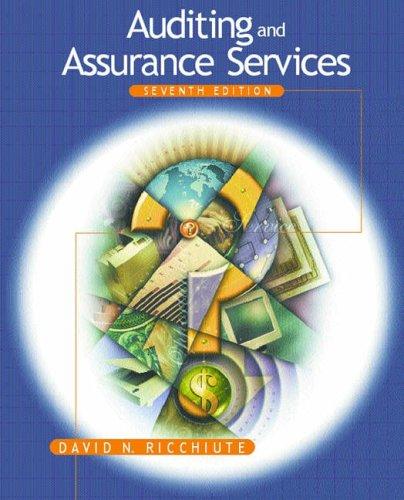Question
67. Select the correct option (there is only one) for parts a. to g., thus answering all questions. Do not provide an explanation. a. On
67. Select the correct option (there is only one) for parts a. to g., thus answering all questions. Do not provide an explanation.
a. On a joint return in most situations, what is the maximum amount of gain a taxpayer could exclude from the sale of his or her home?
i. $200,000
ii. $300,000
iii. $400,000
iv. $500,000
b. Christian owns two homes, one in Oregon and one in New Hampshire. In 2011 and 2012, he lived in the Oregon home. In 2013 and 2014, he lived in the New Hampshire home. In 2015, he lived again in the Oregon home. Which of the following statements is true regarding Christians eligibility to exclude the gain on the sale of his homes in 2015?
i. He would be eligible to partially exclude the gain from the sale of the Oregon home in 2015
ii. He would not be eligible to exclude the gain from the sale of the New Hampshire home in 2015
iii. He would not be eligible to exclude the gain from the sale of the Oregon home in 2015
iv. He would be eligible to exclude the gain from the sale of either home in 2015
c. Naomi bought and moved into a house in July 2011. She lived there for 13 months and then moved in with a friend. She moved back into her own house in 2014 and lived there for 12 months until she sold it in July 2015. Which of the following is true regarding Naomis exclusion for the sale of her home?
i. Naomi meets the ownership test but not the use test
ii. Naomi meets the use test but not the ownership test
iii. Naomi meets both the ownership and use tests
iv. Naomi does not qualify for a partial or the entire exclusion
d. Justin is a self-employed contractor and was living in a townhouse in Oregon he had owned and used as his main home since 2008. He got a job in North Carolina and sold his townhouse in 2015. Based on Justin's new place of employment and the home he sold, which of the following is true?
i. He is entitled to claim the entire maximum exclusion of gain from the sale
ii. He is entitled to claim a reduced maximum exclusion of gain from the sale
iii. He is not entitled to claim a reduced maximum exclusion of gain from the sale
iv. Justin's sale of his home is not considered to have occurred because of a change in place of employment
e. To elect out of the installment method of payment, a taxpayer reports the full amount of the gain on Form 8949 - Sales and Other Dispositions of Capital Assets on a timely filed return (including extensions) for the year of the sale. If the original return was filed on time, a taxpayer can make the election on an amended return filed no later than how many months after the due date of the return (excluding extensions)?
i. 3 months
ii. 4 months
iii. 5 months
iv. 6 months
f. The income earned from a sole proprietorship is subject to Medicare and Social Security contributions. What is the wage base limit for the 2.9% Medicare tax?
i. $55,050
ii. $117,000
iii. $118,500
iv. No Limitation
g. Which of the following statements about taxation of a sole proprietorship is correct?
i. Any income to the business is treated as income to the business owner
ii. It may be possible to defer income and therefore income tax to a different tax year
iii. They are not required to make quarterly payments of estimated tax liability, to both the state and to the Federal government
iv. The income earned from a sole proprietorship is not subject to income and self-employment tax
Step by Step Solution
There are 3 Steps involved in it
Step: 1

Get Instant Access to Expert-Tailored Solutions
See step-by-step solutions with expert insights and AI powered tools for academic success
Step: 2

Step: 3

Ace Your Homework with AI
Get the answers you need in no time with our AI-driven, step-by-step assistance
Get Started


